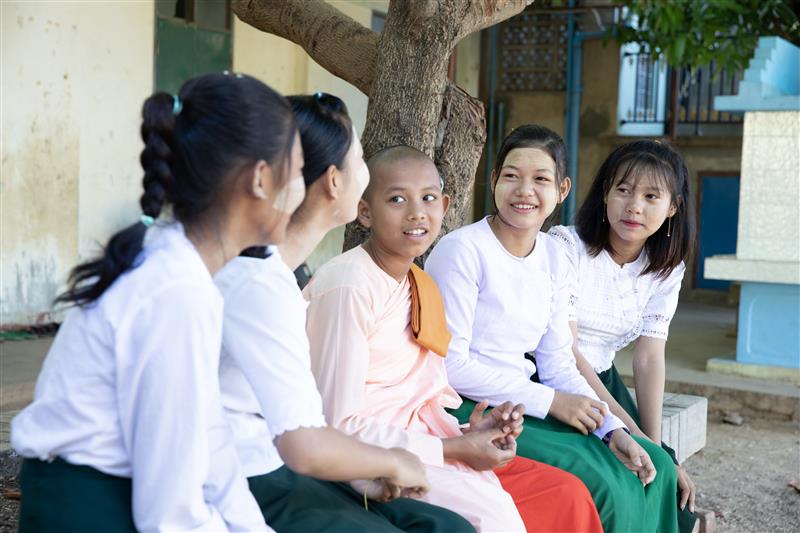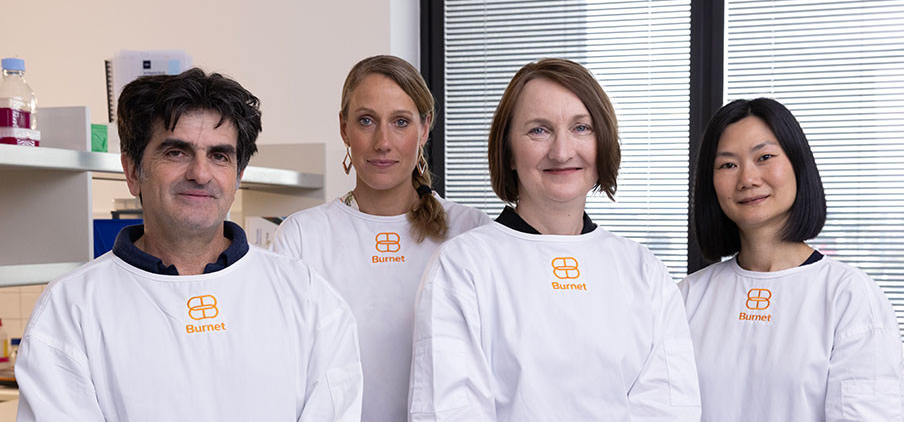

International Collaboration on Hepatitis C Elimination in HIV Cohorts (InCHEHC)
The International Collaboration on Hepatitis C Elimination in HIV Cohorts (InCHEHC) is an international consortium of cohort studies of people with HIV who are at risk of hepatitis C virus (HCV) infection or infected with HCV. InCHEHC has been specifically designed to assess progress towards hepatitis C virus elimination as a public health threat among people with HIV.
In 2013, HCV treatment was transformed through the availability of all-oral direct-acting antiviral (DAA) therapy. In as little as 8–12 weeks of treatment, >95 per cent of patients are cured of HCV, including HIV/HCV-coinfected individuals whose previous cure rates were <50 per cent.
In 2016, the World Health Organization (WHO) set targets for the elimination of hepatitis C as a public health threat by 2030, including an 80 per cent reduction in HCV incidence and 65 per cent reduction in HCV-related mortality. This is a major undertaking given the estimated 59 million people infected in 2020. New absolute targets to guide HCV elimination validation were added in 2021.
PHIV are a key population for HCV elimination, as HCV infection is both more common among PHIV and liver disease progresses more rapidly than in individuals without HIV. HIV/HCV co-infection results in higher rates of HCV-related mortality relative to those with HCV alone. Moreover, regular clinic visits for HIV care provide opportunities for (early) HCV diagnosis and treatment in this group.
The International Collaboration of Hepatitis C Elimination in HIV Cohorts (InCHEHC) was established in 2018 to track progress and guide policy on elimination of HCV in PHIV.
Timeline
- 2017: first meeting of international groups interested in forming a consortium on hepatitis C elimination in people with HIV that led eventually to InCHEHC.
- 2018: inaugural meeting of InCHEHC and publication of first collaborative paper.
- 2020: first data merge.
- 2022: publication of first manuscript based on merged data.
- 2024: second data merge.
Approach
InCHEHC’s first project examined the HCV care cascade in people living with HIV in five countries (Australia, Canada, France, the Netherlands, and Switzerland). Since then, cohorts from Spain and Italy have joined the collaboration. The first data merge of individual-level data was conducted in 2020-2021 and included >100,000 participants, and the second individual-level data merge was conducted in 2024. Cohorts included in InCHEHC were chosen due to the availability of broad access to DAA therapies in their respective country or jurisdiction, while still having differences in HCV healthcare-related policies (e.g., HCV RNA testing), a large coverage of PHIV or a representative sample of PHIV in their setting, long-standing cohort data among PHIV including HCV-related clinical data collection, and/or detailed HCV-related behavioural data.
Community impact
This large international consortium provides empirical evidence on the impact of broad access to hepatitis C treatments on hepatitis C incidence, and hepatitis C related morbidity and mortality.
Student opportunities
Consortium and cohort study projects
Student research projects on hepatitis B and C in people with HIV are available. Most PhD students will conduct a project that includes one project from the consortium in addition to research at one of the participating cohort studies. To date students have led projects on characterising the hepatitis C untreated population despite broad access to DAA therapies, understanding unsuccessful hepatitis C DAA therapy, changes in mortality associated with broad access to DAA therapies, and changes in risk behaviours after successful DAA treatment. Students will gain skills in large data analysis and will add value to their PhD by including an international consortium paper.
A broad range of supervisors are available. Contact Rachel Sacks-Davis to learn more.
Publications
Liver Fibrosis Regression in People Living With HIV After Successful Treatment for Hepatitis C
JAIDS Journal of Acquired Immune Deficiency Syndromes
Jim Young et al
Unsuccessful Direct Acting Antiviral Hepatitis C Treatment Among People With HIV : Findings From an International Cohort
Liver International
Brendan Harney et al
All-cause mortality before and after DAA availability among people living with HIV and HCV: An international comparison between 2010 and 2019
International Journal of Drug Policy
Maria-Bernarda Requena et al
Changes in incidence of hepatitis C virus reinfection and access to direct-acting antiviral therapies in people with HIV from six countries, 2010–19: an analysis of data from a consortium of prospective cohort studies
The Lancet HIV
Rachel Sacks‐Davis et al
Cohort Profile: International Collaboration on Hepatitis C Elimination in HIV Cohorts (InCHEHC)
International Journal of Epidemiology
Daniela K van Santen et al
Reasons for not commencing direct-acting antiviral treatment despite unrestricted access for individuals with HIV and hepatitis C virus: a multinational, prospective cohort study
The Lancet Public Health
Cas J. Isfordink et al
Treatment as prevention effect of direct-acting antivirals on primary hepatitis C virus incidence: findings from a multinational cohort between 2010 and 2019
EClinicalMedicine
Daniela K van Santen et al
Linkage and retention in HCV care for HIV ‐infected populations: early data from the DAA era
Journal of the International AIDS Society
Rachel Sacks‐Davis et al
Partners
Funding partners
This study is funded by the Australian Government National Health and Medical Research Council (Grant numbers GNT1132902 and GNT2020121). We gratefully acknowledge the contribution to this work of the Victorian Operational Infrastructure Support Program received by Burnet Institute.
We acknowledge the ANRS for funding an InCHEHC meeting at the International AIDS Society conference in Mexico in July 2019.
Collaborators
- ACCESS (Australia): Nationwide linked database from primary care, community clinics, hospitals, and pathology laboratories
- AQUITAINE (France): Multi-site prospective hospital-based cohort (13 sites through South-Western France)
- ATHENA (Netherlands): Nationwide prospective cohort
- CCC (Canada): Nationwide multi-site prospective cohort study of people with HIV and HCV coinfection
- CEASE (Australia): Nationwide multi-site observational study
- CO-EC (Australia): Melbourne-based multi-site cohort recruited
- CORIS (Spain): Multicentre cohort study in 28 sites
- HEPAVIH (France): Nationwide multi-site prospective study from hospitals and HIV cohorts (29 sites)
- Icona (Italy): Nationwide prospective cohort
- MOSAIC (Netherlands): Multi-site prospective comparative study with and without acute HCV
- SAIDCC (France): Single-site (Bordeaux) hospital and clinic-recruited prospective cohort HEPAVIH (France): Nationwide multi-site prospective study from hospitals and HIV cohorts (29 sites)
- SWISS (Switzerland): Swiss HIV cohorts: Nationwide prospective cohort
Project contacts
Main contacts
Student supervisor contacts
Project team

Dr Rachel Sacks-Davis
Lead, InCHEHC Coordination Centre, InCHEHC Steering Committee Member

Aimée Altermatt
Data Manager, Graduate Statistician

Professor Joseph (Joe) Doyle
CoEC Cohort Representative, InCHEHC Steering Committee Member

Professor Margaret Hellard AM
Steering Committee Chair

Associate Professor Nick Scott
Technical Advisor

Ashleigh Stewart
Postdoctoral Fellow

Professor Mark A Stoové
ACCESS Cohort Representative, InCHEHC Steering Committee Member

Alexander Thomas
PhD Candidate

Professor Marc van der Valk
ATHENA Cohort Representative, InCHEHC Steering Committee Member
University of Amsterdam; Stichting HIV Monitoring

Dr Colette Smit
ATHENA Cohort Representative, InCHEHC Steering Committee Member
Stichting HIV Montitoring

Dr Anders Boyd
ATHENA Cohort Representative, InCHEHC Steering Committee Member
University of Amsterdam; Stichting HIV Monitoring

Professor Marina Klein
Canadian Coinfection Cohort Representative, Steering Committee Member
McGill University

Dr James Young
Technical Advisor
McGill University

Professor Andri Rauch
Swiss HIV Cohort Studies Representative, Steering Committee Member
University of Bern

Dr Catrina Mugglin
Swiss HIV Cohort Studies Representative, Steering Committee Member
University of Bern

Professor Karine Lacombe
Saint-Antoine Infectious Disease Clinical Cohort Representative, Steering Committee Member
Sorbonne Université

Associate Professor Linda Wittkop
ANRS CO13 Aquitaine Cohort Representative, ANRS CO13 HEPAVIH Cohort Representative, Steering Committee Member
Université de Bordeaux

Dr Inmaculada Jarrin
AIDS Research Network Cohort Representative, Steering Committee Member
Carlos III Health Institute

Dr Juan Berenguer
AIDS Research Network Cohort Representative, Steering Committee Member
Centro de Investigación Biomédica en Red de Enfermedades Infecciosas

Professor Maria Prins
MOSAIC Cohort Representative, Steering Committee Member
University of Amsterdam

Professor Gail Matthews
CEASE Cohort Representative
Kirby Institute, University of New South Wales

Professor Antonella d’Arminio Monforte
ICONA Cohort Representative
ICONA Foundation

Professor Massimo Puoti
ICONA Cohort Representative
University of Milano-Bicocca




